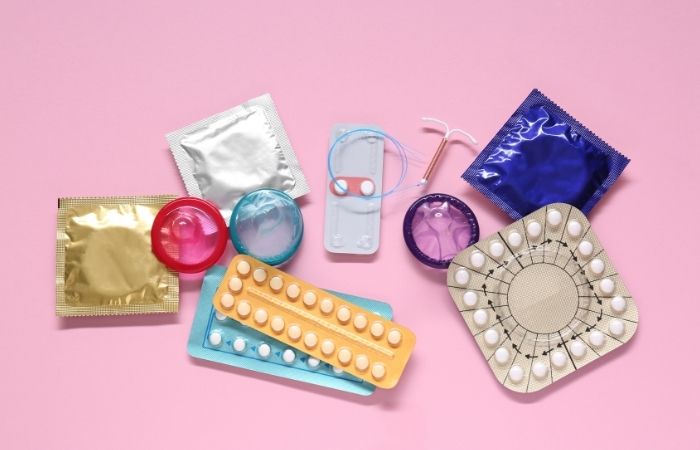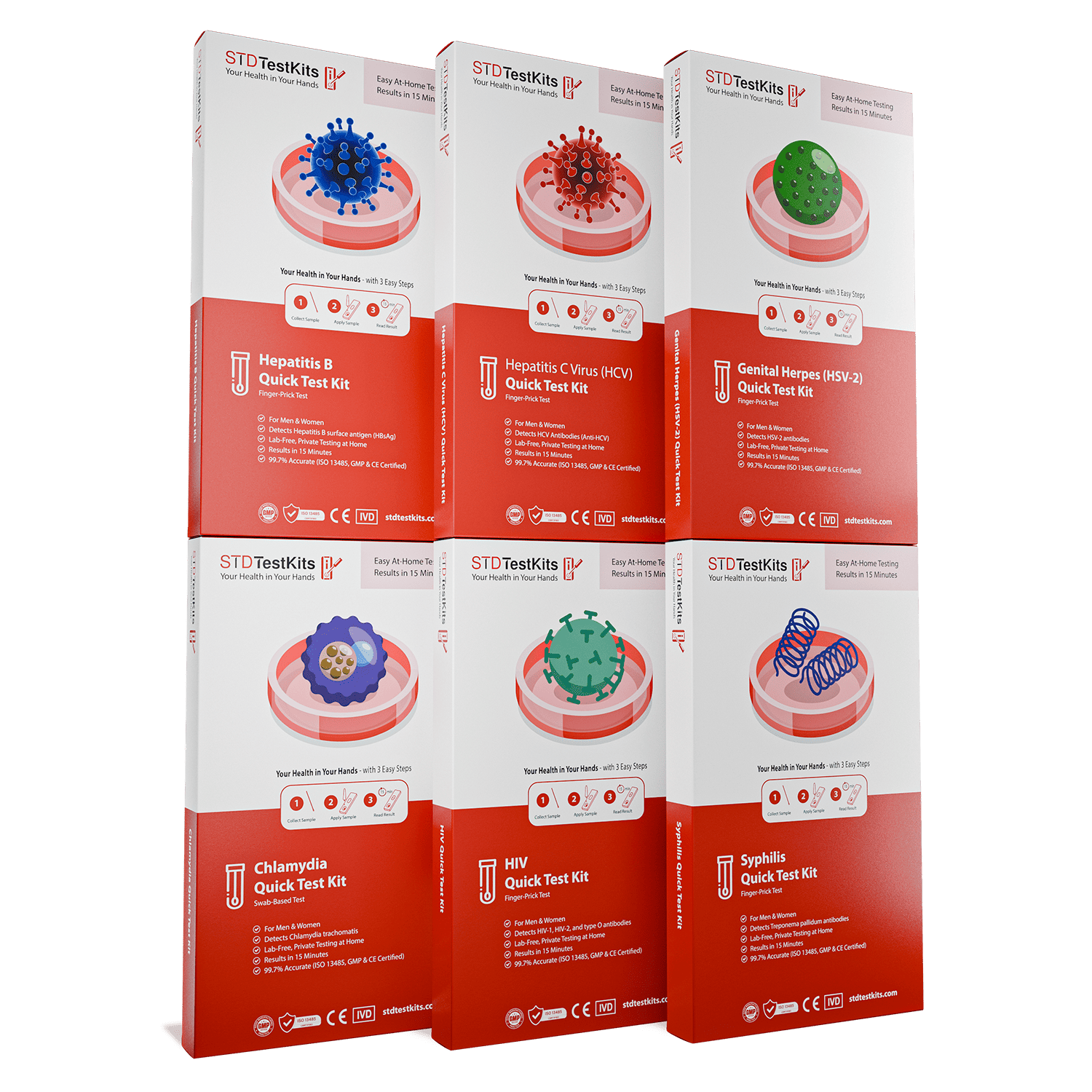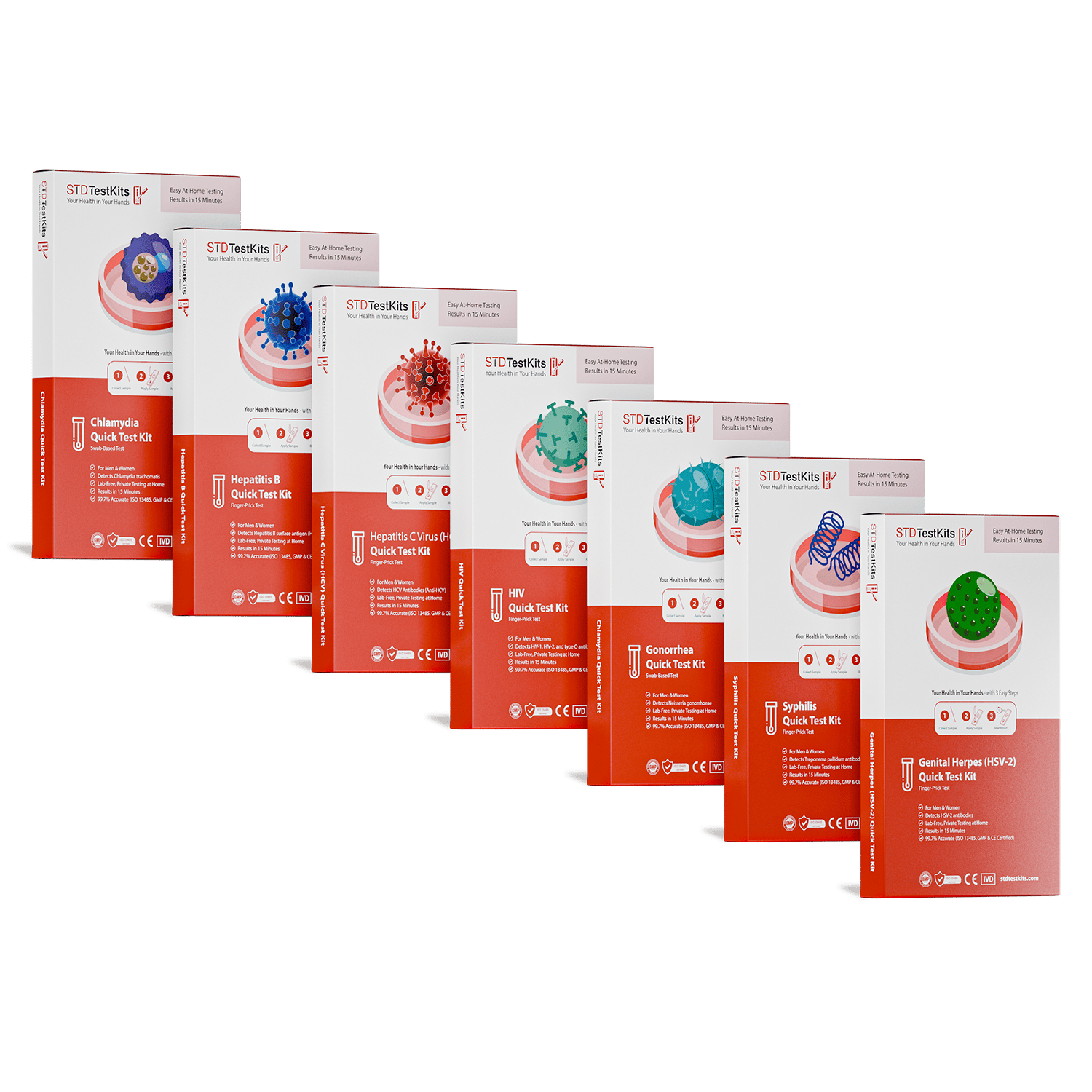My STD Symptoms Vanished. Was I Cured, Or Just Lucky?
Quick Answer: PrEP and PEP prevent HIV, but not other STDs. Regular testing is still critical, and condom use remains important for full-spectrum protection.
The Promise of Protection, and the Illusion of Immunity
Ty, 29, remembers the shift. “Once I started PrEP, I stopped worrying. I knew I was safe from HIV, and that felt like the biggest threat.” He paused. “But then I got gonorrhea three months in. I didn’t even realize I needed to be testing regularly for other stuff.”
Stories like Ty’s are common. PrEP is marketed, rightfully, as a game-changer in HIV prevention. It works by building up a medication level in your bloodstream that blocks the virus from taking hold if you’re exposed. PEP works similarly, but after-the-fact, usually taken within 72 hours of a risky encounter.
However, neither of these medications does anything to prevent bacterial or viral infections like chlamydia, gonorrhea, syphilis, HPV, or herpes. That protective gap often gets lost in translation. Many people on these medications understandably relax their guard, sometimes stopping condom use altogether. And while that can be a valid personal choice, it comes with trade-offs.
So What Does PrEP Actually Protect Against?
Let’s make it painfully clear. Here’s what PrEP and PEP can and cannot do when it comes to STD prevention:
| Medication | Prevents HIV? | Prevents Other STDs? | When to Use |
|---|---|---|---|
| PrEP (Daily) | Yes (up to 99%) | No | Ongoing if you’re sexually active and at risk |
| PEP (Emergency) | Yes (if started within 72 hours) | No | After a known or suspected HIV exposure |
| Condoms | Yes (partial) | Yes (partial, but covers many STDs) | Anytime you want barrier protection |
Table 1. PrEP and PEP protect against HIV only. For full STD prevention, condoms and testing remain essential.
This isn’t about shame or finger-wagging. It’s about being clear-eyed. PrEP gives you incredible protection against HIV, but you still need to watch out for infections like syphilis, which has surged in men who have sex with men since PrEP went mainstream. Why? Because while the fear of HIV dropped, many stopped testing regularly or using condoms at all.
Why Some Infections Are Surging in the PrEP Era
Let’s talk numbers for a second. A 2022 CDC study found a 45% increase in syphilis cases among PrEP users in certain metro areas. Gonorrhea and chlamydia rates followed suit. This isn’t because PrEP is bad, it’s because it works. That sense of safety changes behavior. People may opt for more partners, less condom use, or skip routine tests.
“We’re not blaming PrEP,” said a public health worker quoted in the report. “We’re blaming the narrative that you don’t need to think about anything else once you’re on it.”
Another dynamic? Fewer symptoms. Some STDs like chlamydia and HPV are often asymptomatic. Without the anxiety that HIV used to bring, people delay or avoid testing. That allows silent infections to spread between partners, especially in communities where hookup culture is fast-moving or communication is limited.
And this isn’t limited to cis gay men. Cis women, nonbinary folks, and trans men using PrEP all face similar risks. The illusion of full-body immunity isn’t tied to gender, it’s tied to incomplete messaging.

People are also reading: My Partner Has HPV. Am I at Risk, And What Should I Do Next
“I Was On PrEP, and Still Got Herpes”
Jasmine, 24, had been on PrEP for six months. “I was hooking up more often, feeling confident. But I started getting these blisters down there, and I freaked. I thought PrEP covered everything.”
It didn’t. Her diagnosis: genital herpes (HSV-2). She was shocked, then angry. Not just at the situation, but at herself. “I didn’t know herpes was even still a thing. I thought that was old-school or rare. I guess I thought I was immune.”
Her story isn’t unusual. Herpes is still extremely common, especially among sexually active adults under 30. And unlike HIV, it’s not something you test for automatically unless you show symptoms, or unless you ask for it specifically. Most STI panels don’t include herpes unless you request it, and even then, many doctors push back because the results can be confusing.
What Jasmine needed wasn’t just medication, it was information. PrEP had given her a powerful shield, but no one told her what it didn’t block. No one explained that prevention still meant regular testing, even without symptoms. And no one told her that herpes is manageable, not a death sentence.
This is the emotional side of the prevention gap, the one people carry quietly. When protection fails, not because the drug failed, but because expectations were too high, it feels like betrayal. That’s when stigma returns in full force.
But it doesn’t have to be that way. Prevention doesn’t mean invincibility. It means being equipped with the full truth, so you can make decisions with both protection and pleasure in mind.
Should You Still Be Testing While on PrEP?
The answer is yes. Strong, bold, unavoidable yes. If you’re taking PrEP, guidelines recommend you test for chlamydia, gonorrhea, and syphilis at least every 3 months. Some clinics even suggest every 2 months for higher-risk individuals. Testing isn’t just for you, it protects your partners, too.
Still, many users forget or avoid this step. Maybe your provider doesn’t emphasize it. Maybe you hate the clinic vibe. Or maybe you just think, “I feel fine.”
But STDs are often quiet. Gonorrhea in the throat? No symptoms. Chlamydia in the rectum? Same story. By the time symptoms show, you may have already passed it to someone else, or experienced internal damage yourself.
This is where at-home STD testing can be a game-changer. No appointments. No judgment. Just mail-in or rapid options you can do in your bathroom. Some even come bundled with HIV tests if you’re on PEP or haven’t started PrEP yet.
If your head is spinning right now, peace of mind is one test away. This discreet combo kit screens for the most common infections, chlamydia, gonorrhea, syphilis, and more, in one simple step.
Why People on PrEP Delay Testing (And Why It Backfires)
In early 2023, Marco, 32, skipped his quarterly check. “I was busy, didn’t feel sick, and honestly, I felt invincible. PrEP had my back.” Then came the burning, first during urination, then during sex. It wasn’t HIV. It was chlamydia. “I was pissed, not just at the infection, but at how easy it could have been caught sooner.”
This isn’t uncommon. Many PrEP users admit they delay or avoid testing for reasons like:
→ They assume no symptoms means no problem. → They’ve had negative results before and assume status hasn’t changed. → They feel awkward bringing it up with providers. → They think frequent testing means they’re being “paranoid.”
But regular screening while on PrEP isn’t about paranoia, it’s part of the package. Just like you wouldn’t skip brushing your teeth because you flossed, you shouldn’t skip testing because you’re on PrEP. They protect against different things.
PEP: The Emergency Option With Real Limits
PEP is the other half of this prevention story. It’s often a panic-button choice, taken after a condom breaks, or after a hookup where you weren’t sure about your partner’s status. But it’s not bulletproof. And it comes with caveats.
PEP only works if started within 72 hours of possible HIV exposure. It’s a 28-day regimen that can cause side effects, from nausea to fatigue. And here’s what’s most often missed: it doesn’t touch any other STDs. If you were exposed to gonorrhea, syphilis, HPV, or herpes, you’re still at risk, even if you took PEP perfectly.
There’s also the false security factor. After PEP, some people assume they’re in the clear. But HIV tests can take weeks to turn positive. STD symptoms might not appear right away. And without follow-up testing, ideally 30–45 days later, you might miss a diagnosis entirely.
Here’s a breakdown of what PEP does, and doesn’t, cover, especially post-exposure:
| Infection | Covered by PEP? | Testing Needed After? | Symptoms Common? |
|---|---|---|---|
| HIV | Yes (if started within 72 hours) | Yes, 30 days and 90 days after | Rare early on |
| Chlamydia | No | Yes, 1–2 weeks after exposure | Often silent |
| Gonorrhea | No | Yes, 1–2 weeks after exposure | May cause discharge or pain |
| Syphilis | No | Yes, at 3–6 weeks and again at 3 months | Often missed early |
| Herpes | No | Only if symptoms appear | Yes, during flare-up |
Table 2. PEP is HIV-specific. STD testing should still follow any potential exposure, especially if symptoms appear or if multiple partners are involved.
If you’ve ever taken PEP after a scare, give yourself credit. It’s a smart move. But don’t stop there. A combo test kit can catch what PEP misses, and give you peace of mind that doesn’t fade after 28 days.

People are also reading: Florida’s HIV Crisis by the Numbers: Who’s Most at Risk and Why It’s Rising
Condoms, PrEP, and Testing: What’s the Right Mix?
This isn’t about pushing one method over another. It’s about helping you build a prevention toolkit that works for your life. For some, that means PrEP and condoms. For others, it’s just PrEP and testing. And for many, it’s a mix that shifts over time based on partners, risk, and priorities.
Dante, 36, put it this way: “I used condoms religiously before PrEP. Then I stopped for a while, but I noticed I was getting treated for something new every few months. Now I use them when I can, and I test every 3 months like clockwork.”
There’s no shame in adjusting. What matters is being aware, and staying ahead. If you’re having unprotected sex, testing every three months is the baseline. If you’ve had multiple new partners or group play, you may want to test more often. And if something doesn’t feel right? Test now, not later.
Whether it’s a bump, a burning, or just a gut feeling, your sexual health deserves clarity. STD Rapid Test Kits offers FDA-approved at-home tests you can use without judgment or clinic wait times.
Testing Isn’t About Guilt. It’s About Power.
Let’s say that again. Testing isn’t punishment. It’s not a confession. It’s power. It’s one of the only ways you get to take control, before symptoms show, before things get complicated, before trust gets shaken.
PrEP gives you peace of mind about HIV. That’s huge. But real sexual safety comes from layered care, testing, communication, protection, and knowing your body. One pill a day doesn’t replace those things. It just supports them.
And if you ever test positive? That doesn’t mean you did anything wrong. It means you get to act. You get to treat it, heal, tell your partners with clarity, and get back to feeling good about your sex life again.
Ready to take that next step? A combo at-home STD test covers the infections PrEP and PEP can’t. Fast, discreet, and handled from wherever you are, because you deserve answers, not anxiety.
What If You Get a Positive Result While on PrEP?
Elise, 27, got her first ever positive result six months into her PrEP journey. “It said syphilis. I stared at it for 10 minutes. My first reaction was, ‘But I’m on PrEP. How?’”
That reaction is common, and completely understandable. PrEP does such a good job at preventing HIV that it’s easy to forget it doesn’t block anything else. But a positive test doesn’t mean your strategy failed. It means your prevention plan just found something early, before it got worse, before it spread, and before you passed it on.
When you test positive for an STD while on PrEP, here’s what usually happens next:
You may need confirmatory testing (especially for syphilis or herpes), which can be arranged via telehealth or a local clinic. Treatment often involves a short round of antibiotics. You’ll be encouraged to notify partners, either directly or anonymously. And depending on the infection, you may need to retest in a few weeks to confirm it’s cleared.
This process isn’t always fun. But it’s powerful. You’re catching infections early. You’re protecting future partners. And you’re keeping your sex life rooted in confidence, not confusion.
The Truth: PrEP Is a Tool, Not a Total Shield
Too many people start PrEP thinking they’ve bought an all-access pass to worry-free sex. And while it does dramatically reduce HIV risk (over 99% when taken daily), it does nothing to block the STDs that still make up most new infections today.
Let’s be clear: this isn’t an anti-PrEP message. PrEP is liberation. It’s safety. It’s autonomy. But when it’s sold as a cure-all, people get blindsided. That’s not liberation. That’s a setup.
What makes PrEP powerful is how it fits into a bigger picture: , You get protected from HIV. , You test regularly for other infections. , You use condoms when you want an extra layer. , You talk with partners honestly about risks. , And you stop letting fear or shame dictate your care.
If you’re already on PrEP or PEP, you’re doing something amazing. You’re protecting yourself and your partners. Just don’t forget the next piece. Testing is prevention too. Especially when it’s private, easy, and in your control.
Take five minutes today to make sure you’re covered. This combo STD test fills in the gaps PrEP can’t touch. No waiting room. No judgment. Just clarity.
FAQs
1. Can you still get STDs while on PrEP?
Totally. PrEP is a rockstar at blocking HIV, but it doesn’t touch other infections like syphilis, chlamydia, or herpes. Think of it like wearing a raincoat in a hurricane, it helps, but you’ll still get wet if you’re not covering everything else.
2. How often should I test for STDs if I’m using PrEP?
The general rule? Every 3 months, minimum. If you’ve had a few new partners or anything felt off, you might even bump that up. Think of it like getting your oil changed: routine, no big deal, but critical if you want things running smooth.
3. Does PEP protect me from other infections?
Nope. PEP is emergency-only and HIV-specific. It won’t do anything about gonorrhea or chlamydia. If you had a risky hookup, taking PEP is smart, but you’ll still want to test for other STDs a week or two after. Otherwise, you’re flying blind.
4. What happens if I test positive for an STD while on PrEP?
First of all, deep breath. You're not dirty, broken, or reckless. You’re human. Most STDs are treatable, and finding them early is a win. You’ll likely get a short round of antibiotics, maybe retest later, and get back to living your life. Being on PrEP doesn’t mean you failed, it means you’re already taking your health seriously.
5. Should I still use condoms even though I’m on PrEP?
That’s up to you. Some people do. Some don’t. But here’s the thing: PrEP protects against HIV, not the rest of the alphabet soup. Condoms lower your risk for almost everything else. If you ditch them, just be honest with yourself, and make testing a regular part of your routine.
6. I thought herpes wasn’t a thing anymore. Should I actually be worried?
It’s definitely still a thing, and pretty common. You could be totally symptom-free and still pass it to someone else (or catch it). PrEP won’t stop it. Testing for herpes is tricky, though, and not always included in routine panels. If something looks or feels off down there, get it checked. Trust your gut.
7. Can I use at-home tests while taking PrEP?
Yes, and you absolutely should. If clinic vibes stress you out or you just want privacy, at-home testing kits are a game-changer. They’re fast, discreet, and some cover multiple STDs at once, perfect for filling the gaps PrEP leaves behind.
8. Does being on PrEP make me more likely to catch other STDs?
Not directly. PrEP doesn’t weaken your immune system or anything like that. But some folks do take more risks after starting it, fewer condoms, more partners, less testing. So, yeah, the behavior shift can raise your chances. But the pill itself? It’s not the culprit.
9. I missed my last test. Is it too late to catch something?
Nope. It’s never too late to check in with your body. Maybe nothing’s wrong. Maybe something’s brewing silently. The point is, testing now gives you answers, and options. One discreet combo test can catch up on what you might’ve missed.
10. If I keep getting STDs, is PrEP still worth it?
Yes. A thousand times yes. Getting chlamydia twice sucks, but it’s treatable. Getting HIV? That’s a whole different path. PrEP is still doing its job. You just need to back it up with regular testing and maybe a little recalibration. No shame, just strategy.
You Deserve Answers, Not Assumptions
If you're taking PrEP, you already care about your health. But caring means staying informed, especially about what your protection does (and doesn’t) cover. STDs like chlamydia, syphilis, and herpes are still circulating. And you still need to test.
Forget fear. This is about ownership. You get to enjoy your sex life, fully informed and fully empowered. No shame, no stigma, just facts, and choices. Your next move? Make testing part of your routine. It’s quick, private, and yours to control.
Order a combo STD test kit today. Know your status, protect your partners, and feel good doing it.
How We Sourced This Article: We combined guidance from the CDC, WHO, and Planned Parenthood with peer-reviewed studies and real-user perspectives. We've picked out six below that are clear and useful for people who are trying to understand PrEP and STD risks in real life.
Sources
1. HIV pre-exposure prophylaxis and sexually transmitted infections
2. Trends Analysis of Sexually Transmitted Infections Before and After the Introduction of PrEP
3. Postexposure Doxycycline to Prevent Bacterial Sexually Transmitted Infections
4. CDC – Clinical Guidance for PrEP
5. CDC – STI Treatment Guidelines, 2021
6. Preexposure prophylaxis for the prevention of HIV infection – JAMA
About the Author
Dr. F. David, MD is a board-certified infectious disease specialist focused on STI prevention, diagnosis, and treatment. He blends clinical precision with a no-nonsense, sex-positive approach and is committed to expanding access for readers in both urban and off-grid settings.
Reviewed by: A. Ray Johnson, MPH | Last medically reviewed: September 2025
This article is meant to give you information and is not a substitute for medical advice.







